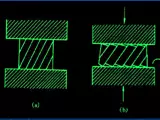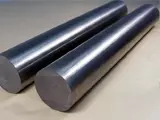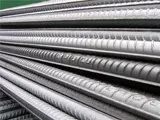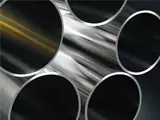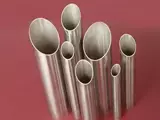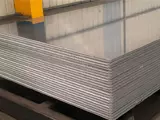Low Temperature Mechanical Properties of 1Cr17Ni7 (AISI301) Austenitic Stainless Steel
1 Introduction
1Cr17Ni7 (AISI301) is an austenitic stainless steel containing about 17% chromium and 7%nickel. This steel is widely used for the manufacture of kitchen utensils and tableware, buildings, chemicalequipment and other industrial parts, due to its strength and good corrosion resistance. It has been proved that 1Cr17Ni7 steel exhibits a good fatigue strength under a wide range of mechanicalload levels or temperatures. The importance of understanding the temperature effect on the materialproperties upon its fatigue life becomes increasing important in the development of new equipmentand construction structures. This paper reports on the mechanical properties and behaviour of a particulargrade of 1Cr17Ni7 (AISI301) under the low temperature environment.
2 Test Methods and Procedures
2.1 Sample Preparation
Six specimens of AISI 301 stainless steel having a nominal composition of 0.08 %C, 17 %Cr, 6.5 %Ni, 0.15%N, 1.5 %Mn, 0.2 %P and 0.04 %S were cut from the same steel ingot. All surfaces of the specimenswere polished with emery paper of grades ranging from 400 to 2500, to remove surface defects,irregularities and grinding marks. The specimens were degreased and then annealed for two hours ata temperature of 1123 K (850°C). The specimens were quickly quenched after annealing and thenprepared for mechanical testing.
2.2 Mechanical Testing
Tensile tests were performed on a universal testing machine with a 450 kN capacity. Cross-sectionalareas of the specimens were measured before the tests in order to calculate the engineering stress-straingraphs.The specimens were tested at room temperature and then cooled down to liquid nitrogen temperatureof 77 K (–196° C). Constant-rate-of-loading tests were performed to measure the rupture times. Theapplied load was half of the maximum load at which the fracture occurred.
3 Results and Discussion
3.1 Tensile Testing at Room Temperature
Fig. 1 shows the engineering stress-strain values obtained from the tensile test performed at roomtemperature. The results reveal an average tensile strength of 922 MPa, an average yield strength of774 MPa and an average strain-hardening exponent (n) of 0.19.
Fig. 2 shows the stress-strain values obtained from the tensile test performed at 77 K. It is observed thatthe tensile strength decreases from 922 MPa at room temperature to 691 MPa at 77 K, i.e., a decrease rateof 25%. The yield strength at 77 K is found to be 463 MPa, i.e., 40 % lower than that at roomtemperature. The strain-hardening exponent at 77 K is found to be 0.11, i.e., 40 % lower than that atroom temperature.
Fig. 3 shows the temperature dependence of the tensile strength, yield strength and strain-hardeningexponent of 1Cr17Ni7 (AISI301) steel. It is observed that on cooling to 77 K, there is a considerable dropin values of these parameters. The tensile strength and yield strength are found to be lower at 77 K,whereas the strain-hardening exponent is found to be lower.
3.2 Constant-Rate-of-Loading Tests
Rupture times for the constant-rate-of-loading tests are shown in Fig. 4. At room temperaturethe rupture time is found to be 20 min, whereas at 77 K it increases to 50 min. This indicates athree-fold increase in the rupture time when the temperature is reduced from room temperature to 77K.
Fig. 5 shows the effect of cooling rate on the rupture time of 1Cr17Ni7 (AISI301) steel. It is observedthat the rupture time increases with reduction of the cooling rate in the range of 0.5 to 3 K/min. Therupture time is found to be maximum with a cooling rate of 0.5 K/min.
4 Conclusions
1. The tensile properties of 1Cr17Ni7 (AISI301) steel in the temperature range of 77 to 300 K havebeen investigated and the results are compared.
2. The tensile strength and yield strength are found to reduce by 25% and 40%, respectively, on coolingfrom room temperature to 77 K.
3. The strain-hardening exponent also reduces from 0.19 at room temperature to 0.11 at 77 K.
4. The rupture time increases from 20 min at room temperature to 50 min at 77 K, indicating athree-fold increase in the rupture time when the temperature is reduced from room temperature to77 K.
5. The effect of cooling rate on the rupture time of 1Cr17Ni7 (AISI301) steel has also beeninvestigated and it is seen that the rupture time increases with reduction of the cooling rate in therange of 0.5 to 3 K/min.



